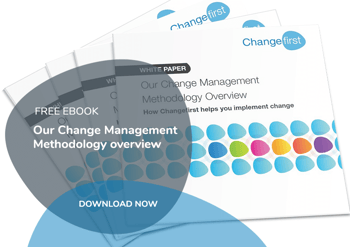Two events collided a few years back to bring the business world back focused on influence.
.png?width=800&height=400&name=Untitled%20design%20(6).png)
Not since Dale Carnegie’s book in the 1930’s – ‘How to Win Friends and Influence People’ – has so much been written and discussed about the subject. So what were those two events?
- Malcolm Gladwell’s ideas: Firstly, Malcolm Gladwell’s best seller ‘Tipping Point - How Little Things Can Make a Big Difference’ described how the implementation of an idea can be very dependent on the work of a small number of influencers. He replays the 20/80 idea - where 20% of the people achieve results by influencing the other 80%. He calls this ‘The Law of the Few’. He then talks about the ‘The Stickiness Factor’ (which incidentally has implications for making change ‘stick’) which is how the content of the message is so important in making it memorable and ‘The Power of Context’. As he says that people are highly influenced by what is happening in their environment.
- Explosion in social networking online: Secondly, the birth and explosion of social networking on-line reinforced many of these ideas. Sites like Facebook, LinkedIn and Instagram have brought to people’s attention that networking is important. And critically it made it easier. You sign up for free and you can connect to all sorts of people that either you knew or wanted to be connected to.
For some of us that became more of a curse than a blessing. Most of the sites are based on the idea that you trust people who are not more than two degrees of separation away from you. Much of this is based on a 1967 study "Six Degrees of Separation" by social psychologist Stanley Milgram. Milgram distributed letters to 160 students in Nebraska, with instructions that they be sent to a stockbroker in Boston (not personally known to them) by passing the letters to anyone else that they believed to be socially closer to the target.
The study found that it took an average of six links to deliver each letter. The fact that Milgram’s findings continue to be discussed and debated all these years later points to the potential importance of his chosen area of research then and now.
Why does this matter to change agents?
For a lot of people who manage Change these ideas seem to make sense. For example:
- organisations are more matrixed than ever so formal power is more diffused than in the past
- leaders seem to have less formal power or at least are more impacted by informal influence in the organisation
- new recruits to the workforce can often potentially seem more resistant to old leadership styles
What is for sure is that some people can be very influential in organisations regardless of title or level.
In our Change Management training workshops we train Change Agents to use a powerful tool called Change Network Mapping which is a highly practical stakeholder mapping tool. It describes the flow of power and influence around a change and then helps you decide what actions to take.
People can usually spot four types of influencers in their organisations:
- Advocates - talk to others about the benefits of the change
- Connectors - help you meet other people
- Controllers - regulate access to people or information
- Experts - seen as being technically credible by others
This then lets Change Agents plan their tactics to work with these people and try to align them to support the change. Very powerful stuff.
Health warning: the power of influence can be over-stated!
However, it’s important to sound a note of caution regarding this excitement around influence.
Firstly, some of the earlier findings of Millgram and Gladwell have been challenged by people such as Duncan Watts at Columbia and the economist Steven Levitt. They point out it’s not so clear cut. Go here to Wikipedia for the critique.
Secondly, in Change Management the danger is you become over-reliant on using influence to drive change. Sure, it’s important but so are the formal mechanisms of change. Organisations, like it or not, have remained hierarchical (if more complex) and structured change plans can create acceptance for a change if not lead to real commitment. More worryingly a couple of years ago we saw whole change efforts predicated on the basis that if I can influence people to say they will do something, they will do it. Almost regardless of the consequences to themselves. This didn’t make much sense then and makes even less now!
Five actions that will help Change Agents harness influence

So, what can Change Agents do to be more effective around leveraging the power of influence?
- Establish a network of influencers early in the change process. You need to talk to people during the initiation stage of the project before they become influenced by others
- Where possible identify key influencers to be on project teams and steering groups. People tend to buy into whatever they create unless there are big personal consequences for themselves
- Ask other people - who is influential in your part of the business? You won’t know everyone and others can help you plug gaps in your networks
- Make sure that you have the knowledge and information to deal with experts. Plan those meetings very carefully. You want all the information at hand to be convincing and credible. Bring others to the meeting if necessary. Experts can be very unforgiving of people who they view as having poor technical knowledge
- If you are more junior than the people you need to influence then you need to leverage your position by influencing more senior people to help you. If possible, you want one of their colleagues talking to them. It’s not so much about seniority as it is about trust.
This area of a Change Agent’s work is probably the most critical yet the most difficult. It’s what makes your job hard. Building networks and alliances is intangible, shifting and political. But there are techniques to help you:
- Ways to map who is key
- Techniques to identify influence accurately
- And, the development of soft skills to improve your personal techniques
These are important components of our own Change Management methodology and Change training workshop for Change Agents.
Visit our website to learn more.
|
|
Interested in how you can harness influence in your approach? Download a copy of our Change Management methodology ebook which includes helpful information on a range of topics from influence to successful engagement in change - and how to deal with resistance effectively. |





Leave a comment